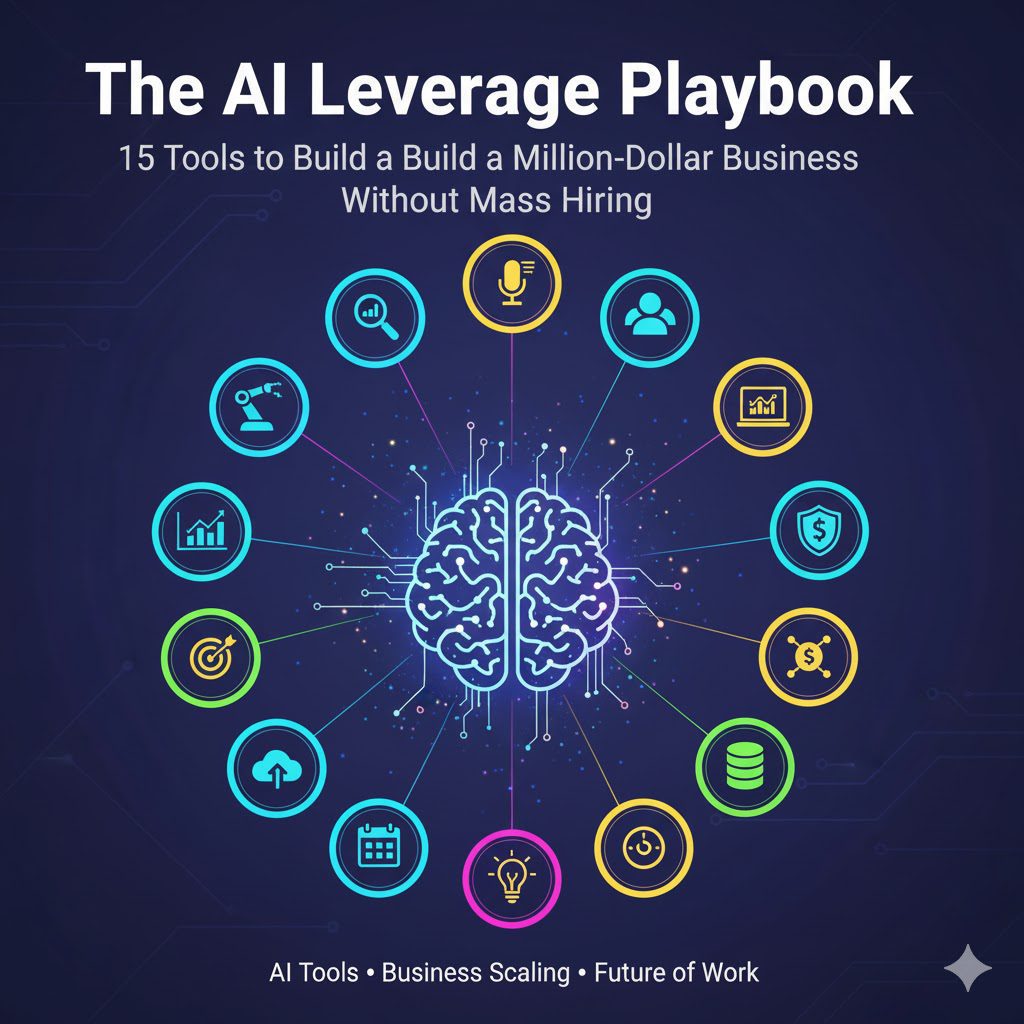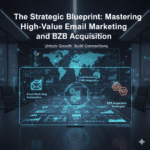In the new economy, scaling a business to the million-dollar mark and beyond no longer requires a linear increase in headcount. The traditional path of “more revenue = more employees” is being fundamentally disrupted. Today, the most competitive and profitable businesses are not the ones with the largest teams, but the ones with the greatest leverage. That leverage, overwhelmingly, comes from Artificial Intelligence.
This isn’t just another high-level discussion of ChatGPT. This is a practical exploration of the specific AI tools that forward-thinking companies are implementing right now to boost productivity, automate complex workflows, and stay light-years ahead of the competition. By integrating these tools, you can effectively build a million-dollar operation with a skeleton crew, or even solo.
The key is to understand the profound shift in the nature of work: the future belongs not to the “doer of tasks,” but to the “director of outcomes.”
The Great Shift: From Doer to Director
Before diving into the tools, it’s essential to grasp this core philosophy. For decades, value was created by executing a to-do list. An employee was paid to perform a series of tasks. AI is rapidly absorbing this role. It can write code, analyze data, design ads, and answer questions better, faster, and cheaper than most humans.
The wealthiest and most successful entrepreneurs of the next decade will be the world-class directors.
These are the people who understand what can be done and can effectively direct the AI systems and automated workflows to achieve the desired business outcome. Your value is no longer in your ability to type, but in your ability to think. It’s not about executing the list; it’s about designing the system that executes the list 24/7, even while you’re on vacation. The 15 tools that follow are the instruments for this new kind of digital-age director.
1. Fathom: The AI Meeting Co-Pilot
Meetings are one of the biggest time-sinks in any business. Team members are often so focused on taking detailed notes that they fail to be present, miss strategic opportunities, or misremember key decisions.
Fathom solves this by acting as a “meeting co-pilot.” It joins your call (on platforms like Zoom or Google Meet), records, and transcribes the entire conversation. Immediately after the meeting, it provides an instant, AI-generated summary broken down by topic.
Its true power lies in its details. It automatically identifies action items and can send “next steps” to every participant based on their role in the conversation. You no longer have to argue about who said what. You can even query the meeting’s “memory,” asking questions like, “What were the final revenue updates?” and get an answer in seconds.
This is a glimpse into Organizational AI. As Fathom documents every meeting, it builds a searchable, intelligent archive of your company’s collective brain. A leader can then query what happened across the entire business, achieving scale and oversight without spending 20 hours a week in catch-up calls.
2. Zapier: The Automation Glue of the Internet
If you want to build a million-dollar business, you must automate your delivery system. Zapier is the foundational tool for this. It acts as the “glue” that connects over 6,000 different web applications, allowing you to create automated workflows without writing a single line of code.
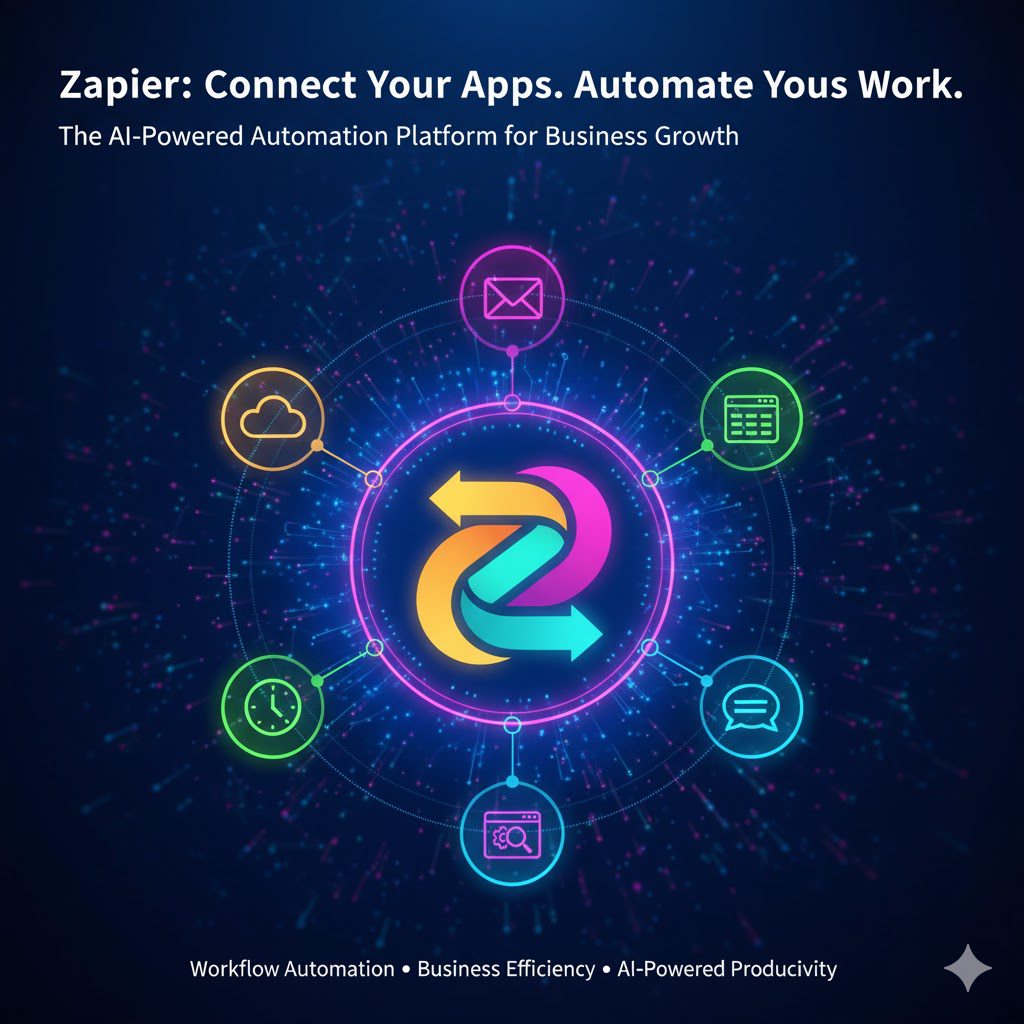
The logic is simple: “When this happens in App A, do this in App B.” Think about a new customer purchase. When they pay (App A: Stripe), Zapier can instantly:
- Send them a welcome email (App B: Gmail).
- Add them to an onboarding sequence (App C: Mailchimp).
- Create a customer profile (App D: Salesforce).
- Notify your team (App E: Slack).
- Schedule their first call (App F: Calendly).
There’s a reported case of a company doing $25 million a year building AI apps, and their entire backend was run on automation. A client pays, fills out a form, and that information is automatically fed to an AI to code the app. The AI sends the app to the client for review. The client gives feedback, which is automatically fed back to the AI for revision. This entire, multi-million-dollar process is automated by a tool like Zapier. Mastering this will give you back at least 25 hours a week.
3. Gum Loop: AI-Driven Process Management
Gum Loop may look like an automation tool on the surface, but it’s a significant step up in intelligence. While Zapier excels at linear, “if-then” tasks, Gum Loop creates a visual representation of a complex process and then uses AI to make decisions within that workflow.
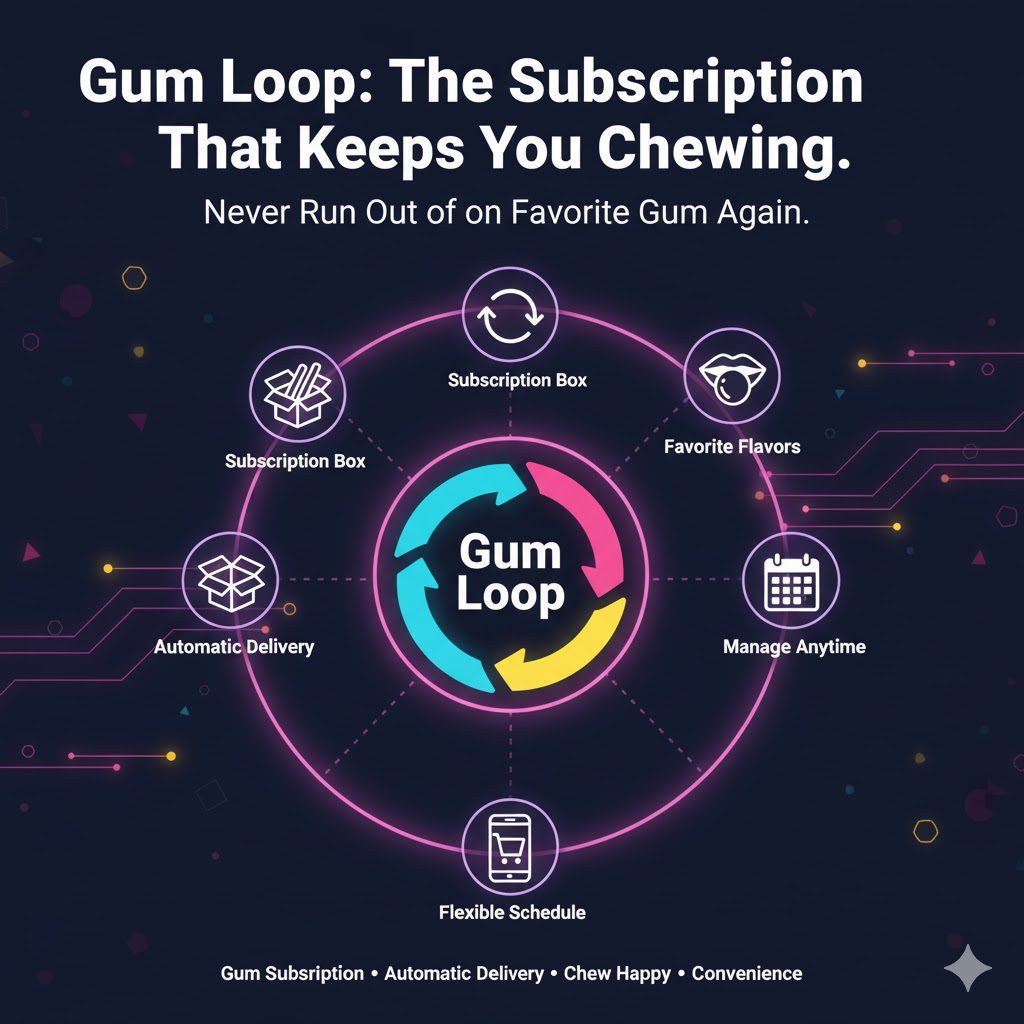
This is where you move from simple automation to AI-driven operations. For example, in financial automation, Gum Loop can handle everything from submitting expenses and reconciling bank accounts to approving purchase orders, using AI to route logic based on the content of the request.
This is invaluable for functions like recruiting. It can analyze resumes, process video submissions, schedule calls, and score candidates, saving your HR department (or you) countless hours. It can also be used for lead scoring, routing high-value prospects to a human while handling low-value inquiries automatically. It’s a visual platform that uses AI to manage logic and decisions, which is exactly what a “director” needs.
4. Cursor: The AI-Powered Code Editor
Code is pure leverage. The ability to build software, features, or even simple scripts allows you to scale an idea infinitely. Cursor is an AI-powered code editor that turns plain-language prompts into production-ready code.
This tool is so powerful that it’s enabling non-technical people to write functional software. A person in finance who understands logic but has never coded can now use Cursor to build the tools they need.
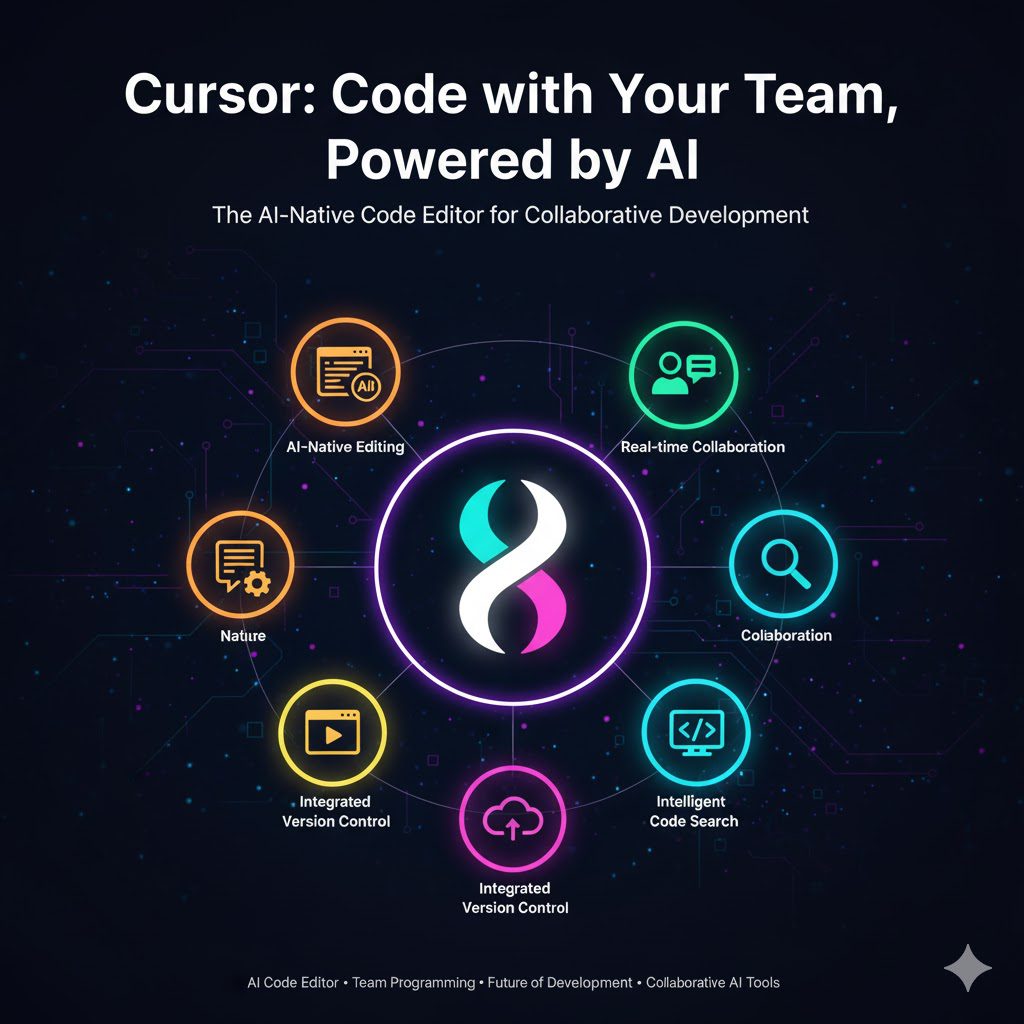
For businesses with developers, this tool creates the “10x programmer.” A long-held philosophy in Silicon Valley is that the best programmers are 10 times more productive than their peers. With Cursor, one good programmer can be as productive as a team of ten, with 10 times the code quality. The CEO of Microsoft, Satya Nadella, has stated that he expects 90% of code to be AI-written in the near future.
Cursor can handle tedious tasks like refactoring code (cleaning it up) or writing unit tests (protecting against bugs)—tasks most programmers hate. It can do it faster, with 100% accuracy, and using all best practices. It can even update a codebase in parallel, kicking off five different tasks at once. The limit is no longer the programmer’s typing speed; it’s the director’s creativity.
5. Notebook LM: Your Personal Research Partner
Notebook LM is a research and thinking partner from Google, powered by its Gemini AI model. Its key difference is that you “ground” the AI in your own sources. You can upload documents, transcripts, PDFs, and web links, and the AI will only use that information to answer your questions.
This is a game-changer for deep, focused work. You can upload all the board information for a company you advise and ask it to “identify the top three strategic risks and formulate five high-impact questions for the CEO.”
One of the most powerful use cases is for content creation. A media team can feed Notebook LM every transcript of everything a founder has ever said. Then, they can ask it to:
- “Extract all metaphors and stories used to describe ‘business leverage’.”
- “Pull all unique perspectives on ‘hiring’.”
- “Analyze what makes the founder’s brand voice unique.”
From this, it can co-create new content that is perfectly on-brand and infused with the founder’s unique DNA. It’s a research partner that already knows everything you know.
6. ChatGPT: The Deep Research Engine
Most people are still using OpenAI’s ChatGPT as a simple chatbot. Its true power, especially with the 4.0 and 03 models, lies in deep research with real-time web access.

Here’s a million-dollar use case: social graph analysis for introductions. Imagine you want to get on a podcast or connect with a specific high-value person. You can give ChatGPT this prompt:
“I want to connect with [Person’s Name]. Analyze my social media graph, the guests I’ve had on my podcast, and the podcasts I’ve been on. Find the top five people in my existing network who have a strong connection to [Person’s Name] and are most likely to give me a warm introduction. Then, draft a concise text message for me to send to each of them asking for the intro.”
This is a task that would take a team of five people three weeks to do manually. AI can do it in six minutes. This is how you move faster. Many businesses are now run with a philosophy that no one is allowed to take action on a new task without first running a deep research project in an AI to understand what has worked for others in the past. This allows an 18-year-old intern to execute with the maturity of a 35-year-old veteran.
7. Claude: The Data-Correlation Specialist
Claude, by Anthropic, is another large language model and a direct competitor to ChatGPT. While all models have their strengths, as of today, Claude’s models (like Sonnet) often excel at high-quality copywriting, scripting, and, most importantly, deep data correlation with less hallucination.
When an AI “hallucinates,” it confidently makes up facts. This is incredibly dangerous for a business. Claude is widely regarded as being more precise and less prone to making things up.
In a business context, this is invaluable. For example, you can upload thousands of customer intake forms—containing data on revenue, employee count, desires, and struggles—to both ChatGPT and Claude. Often, Claude’s answer will be more detailed, actionable, and insightful, finding unique correlations between data points that other models miss. A smart director doesn’t just use one tool; they run their prompts in all the top models and see which one delivers the best answer.
8. Revio: The Human-in-the-Loop Sales Co-pilot
There’s a rush to fully automate customer support with chatbots. This is often a mistake, as it loses the personal touch needed to build trust. Revio (or similar “co-pilot” tools) represents a smarter in-between. It is an AI-driven tool for human chat operators to help them close more deals.

It is not a fully automated bot. Instead, it analyzes all the winning chat conversations from your best salespeople and all the current context of a prospect. As you chat with a person, it sits beside you and suggests what to say.
Its best feature is summarization. You could have been chatting with a prospect across email and social media for three months. Revio will give you a one-paragraph summary of everything you’ve talked about, their situation, and what they want, so you have perfect context, even if it’s been weeks. This is how you use AI on non-customer-facing tasks while keeping a human present for the high-nuance, trust-building conversations.
9. Chat AI: The Internal Knowledge Expert
The biggest bottleneck in any growing business is an unanswered question. An employee is stuck and can’t do their work because they’re waiting for an answer. Chat AI (or “Chat aid”) is an AI chatbot that lives inside your company’s internal chat (like Slack or Teams).
It monitors all conversations and instantly answers questions. When someone asks, “What’s the vacation policy?” or “Where is the video from the Q3 summit?” the AI bot replies before a human even has to see the message.
This replaces the “company know-it-all” who spends all day answering questions instead of doing their own work. In the near future, every company will have an Organizational AI like this, connected to all company knowledge—all documents, emails, meetings, and chats. It will act as a mentor and peer advisor, unblocking everyone and guiding the company forward.
10. Icon: The Automated AI Ad Creative Agency
The days of struggling with Canva or hiring expensive freelancers to design ads are over. Icon (or representative tools like AdCreative.ai) is an AI ad maker that spins out hundreds of fresh, dynamic ad creatives from a single prompt.
This tool essentially replaces an entire creative department. It scans your website, scans your rivals’ websites, and then drafts winning ads based on market data. It can then A/B test these creatives, automatically killing the weak ads and scaling the winners on its own.
This is a license to print money for marketing. Agencies are using these tools behind the scenes, charging businesses high fees for ads, and then using AI to generate and manage them, making a fortune. This is a tool you should be using for your own business to find winning ad combinations at a speed and scale that was previously impossible.
11. Gamma: The Instant Presentation & Deck Builder
The first step to building a business is selling an idea to a stranger. To do that, you need a compelling presentation. Gamma is an AI tool that turns your raw ideas into beautiful, visually-stunning, turn-by-turn presentations.
Good decks close deals. Gamma cuts the build time from hours (or days) of struggling with Google Slides or PowerPoint to mere minutes. You can paste in a simple bulleted list from a meeting, and Gamma will generate a finished, professionally branded deck. With one click, you can also flip that same deck into a scrolling webpage.
Most people have concepts, but they can’t sell them because they can’t tell a compelling visual story. Gamma handles the best practices of design and storytelling for you, allowing you to walk into a bank, a client meeting, or a vendor pitch and look like you have a world-class design consultant on staff.
12. Precision: The AI Business Intelligence Analyst
The biggest challenge for any entrepreneur is understanding the numbers. More importantly, what’s the one number that matters most right now? Precision (or similar AI-powered Business Intelligence tools) is like having an AI analyst monitoring the health of your business.
Its key feature is that it understands benchmarks. Most entrepreneurs don’t know if their 3% conversion rate is good or bad. Is 5% churn terrible or acceptable? Precision plugs into your data sources (like Stripe, Google Analytics, etc.) and creates a live dashboard that not only tracks your metrics but tells you if they are good or bad compared to industry benchmarks.
Then, it suggests strategy based on real data. If your sales win rate is low, it might suggest fixes to your sales script. If marketing leads are down, it will suggest changes. It can even analyze your revenue per headcount and tell you if your team is operating efficiently.
13. Atlas: The AI Voice Scheduling Agent
A pandemic in modern business is the failure to follow up with leads. “Speed to lead” is one of the most powerful ways to 2-3x your revenue. If someone fills out a form on your site, you must call them within seconds, or they will move on to your competitor.
Atlas is an AI voice system that automates the entire reach-out, follow-up, and scheduling process. It sounds like a real person. When a lead comes in, Atlas can instantly call them, have a full conversation, answer their questions, qualify them, and get them booked on a salesperson’s calendar.
It can also be used for confirmations. If you’re running an event for 150 people, you know 40% won’t show up. You can have Atlas call every single person, talk to them to confirm their attendance, and update your calendar—a task that would take a human employee days of mind-numbing work. This ensures you’re never paying for empty seats and that your sales team only talks to qualified, confirmed leads.
14. n8n: Open-Source, Deep Automation
For those who want to build a truly foundational, powerful, and custom automation layer, n8n (pronounced “n-eight-n”) is the tool. It is an open-source automation hub that is more technical and flexible than Zapier. It links over 500 apps with GPT-level intelligence, allowing you to build true “agentic systems.”
This is where you can build a business where every click is automated, putting profit directly back into your pocket. Examples include:
- Taking Fathom meeting notes and automatically creating and assigning detailed tasks in Asana.
- Firing off Stripe webhooks and having a GPT model write a personalized, context-aware thank-you email.
- Running nightly bots that scan all your key metrics, flag anomalies, and ping the right team member in Slack.
This is the platform you use when your creativity for automation is too complex for simpler tools.
15. Lovable: The Instant AI App Generator
This is one of the most futuristic tools available today. Lovable turns your thoughts into fully working, production-ready software applications in minutes. An idea that would have cost $50,000 and 4 months to build can now be prototyped in an afternoon.
The future of every department will be run on these “disposable apps.” Today, businesses run on a clunky combination of Salesforce, accounting software, and a thousand messy spreadsheets. In the future, a department head will simply describe a problem (e.g., “I need an app that pulls data from our CRM and our financial software to show me a customer’s lifetime value vs. their support costs”) and an AI will build that app.
You can import a Figma design file and get clean code. You can hand a live prototype to developers with all the documentation already done. This is the ultimate “director” tool. The faster you can ship ideas and learn from the market, the faster you will make money.
Conclusion: The Future is Directed, Not Done
These 15 tools are not just ways to cut costs; they are powerful engines of scale. They enable a single entrepreneur or a small, lean team to have the productive output of a 100-person corporation. By automating workflows, generating code, handling research, and managing operations, they free you from the “to-do list” and elevate you to the role of a “director.”
The businesses that will win the next decade will not be the ones that hire the most people, but the ones that most effectively leverage AI. The limitation is no longer capital or headcount; it is your own creativity and your ability to direct these powerful new systems.

